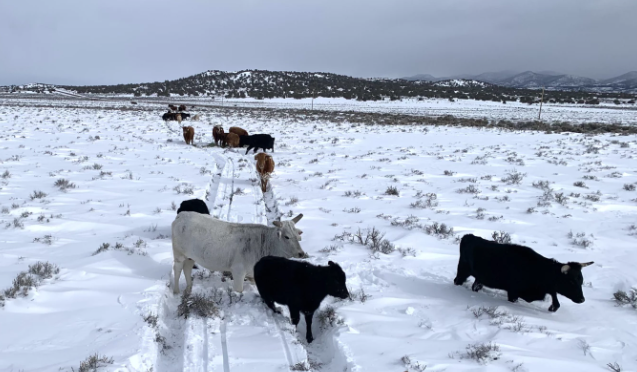Cattle above are located on snow-covered rangelands in Lander County, Nev.
In a written letter to the U.S. Department of Agricultures’ Farm Service Agency (FSA) officials from Nevada, Colorado, Wyoming and Utah say the cold temperatures and persistent snowfall have made it difficult for producers to truck livestock in and out of grazing areas.
Moreover, the amount of plants available for livestock to eat has also been affected, said J.J. Goicoechea, director at the Nevada Department of Agriculture.
“If you’re a grazing permit this time of the year, a lot of those winter permits were snowed over early,” Goicoechea said. “And then none of that vegetation was showing through, especially as that snow continued to accumulate.”
Goicoechea said this comes at a time when producers already face shrinking supplies of supplemental feed to sustain their livestock.
“The stockpiled hay sources and forage that normally you would be eating this time of the year was short because of the ongoing drought,” said Goicoechea, noting livestock feed has surged in demand and costs.
In their letter to the USDA, Goicoechea and other state agriculture leaders asked the agency for help overcoming grazing and feed challenges. They also requested assistance with snow removal and options for offsetting fuel costs.
“We are asking for any flexibility and innovative ideas from the FSA perspective that could expand eligibility and use of emergency programs to provide relief,” officials wrote. “Assistance with supplemental feed/water and locations to move livestock for grazing/feeding are needed urgently.”
As of Feb. 27, Goicoechea said the FSA has not yet responded to their request.














